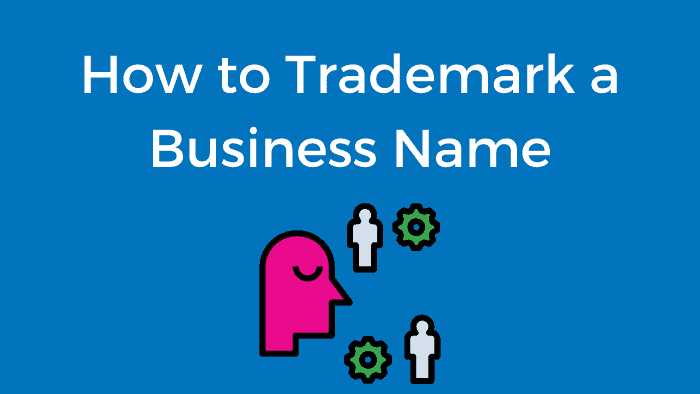“How to trademark a business name?” is a question I hear from my clients quite frequently. To a trademark attorney’s ear the client is asking to register their business entity (Widgets, Inc.).
What the client is really saying is that they want to “federally register my company’s brand.” The mix-up makes complete sense.
There’s a lot of confusion between what constitutes a trademark versus a company name. This article will clear up that misunderstanding and give a roadmap for federally registering your brand.
A business entity is typically a Limited Liability Company (LLC) or Corporation (Inc) registered with your Secretary of State office. It could also be a Non-Profit, Partnership, Estate, Trust, etc.
A business entity is used to hold and organize the assets and debts of a business and provide some manner of liability limitation to the members. This is very different than a trademark.
A trademark is generally a name or logo that connects a product or service to the mind of a consumer. At its core, a trademark is a “source identifier.”
This guide will teach you how to trademark a business name, by explaining it through a hypothetical story.
For anyone that is interested in learning the difference between a trademark, patent, and copyright, we wrote a guide covering that as well!
Trademark Examples
You see a trademark (like the Nike logo) and you instantly know the nature and quality of the apparel or shoes in front of you. I’ll use the Nike example to further explain the difference between a legal entity and a trademark.
Nike, Inc. (the business entity) is the owner of many NIKE® trademarks. Consumers recognize NIKE as a brand. They don’t recognize Nike, Inc. as a brand. They’d simply say Nike, Inc. is a company name.
Let’s look at an example. Below is an actual trademark registration owned by Nike, Inc. I’ve highlighted the trademark and the owner information.

In this particular case Nike, Inc. owns the NIKE trademark. They’re similar in that both include the word NIKE. But business entities don’t have to be similarly named to their registered trademarks.
Take ADIDAS® for example. The ADIDAS trademarks are owned by the AG Joint Stock Company. Clearly a federally registered trademark doesn’t need to be the same as the legal entity.
In fact, a trademark doesn’t even need to be owned by a company. Many clients choose to own trademarks as individuals as there are many advantages of trademarks.
I generally advise clients to have a legal entity own the trademark for practical purposes but it’s not a requirement.
Need more clarification to what serves your business the best? Book a free consultation today!
How Important is it to Register a Trademark?
How important is it to register a trademark? Ask the U.S. government.
On May 29th, 2020 Netflix premiered Space Force, a comedy series starring Steve Carrell. The show is a satirical take on a workplace that is tasked with establishing a sixth branch of the United States Armed Force.
Netflix releases dozens of shows every year, what’s the big deal about this one?
The big deal is Netflix already secured trademark rights to “Space Force” in Europe, Australia, Mexico, while the Air Force is still in line for a pending application inside the United States!
Problems arise when trademark users being selling similar products. Who is selling what? Is that Space Force jacket owned by the U.S. military or Netflix?
This is one of many examples of trademark cases that highlights the importance of why it’s important to register a trademark name, not just federally, but internationally as well.
A small investment covering the cost of a trademark can save you hundreds of thousands of dollars down the road.
Do you have any questions about filing your trademark? Book a free consultation today!
Next, let’s talk about how we go about register a trademark. Let’s use a made-up scenario using a fictional business owner named Robert, to illustrate how to trademark a company name.
How to Trademark a Name
Robert is a young man who wants to start a wine bar called ROBERT’S BOOKS AND WINE. He lives in Minnesota and doesn’t have an LLC. Ideally, he’d call our firm and schedule a free consultation to discuss his business goals and reasons for wanting to register a trademark.

After the consult and some initial research, it appears he’s a good candidate to move forward with a full trademark search and opinion. He signs a legal agreement retaining the firm and I get to work.

In this example let’s pretend the search report came back clean and I advised him that we could safely move forward with a trademark application.
I’d then recommend he register a Limited Liability Company in MN. He could name it Robert’s Books and Wine LLC or something random like Books and Wine Enterprises of MN LLC. It doesn’t matter.

Again, we’re talking about the legal entity name and not the trademark. With the LLC Articles of Organization in hand, I’d prepare him US federal trademark application for ROBERT’S BOOKS AND WINE.
Because Robert hasn’t opened his wine bar yet we’d file an “intent-to-use” application that will effectively hold his spot at the United States Patent and Trademark Office (USPTO) for up to 36 months. Extensions are due every six months.

Furthermore, Robert doesn’t have a logo for ROBERT’S BOOKS AND WINE yet. Remember I just told him the name appears to be registrable. I’d strongly suggest we file a “word mark” trademark application.
Quick Questions: What is the difference between a trademark and a word mark?
Word marks protect the letters of the trademark. Unlike design marks, they don’t protect the color, style, or creative elements of a logo. 90% of clients are best served by filing wordmarks as opposed to design marks.
He agrees and I prepare the word mark application for his review and signature.
Approximately four months after I file Robert’s trademark symbol an attorney at the USPTO called a Trademark Examiner will make a decision as to whether ROBERT’S BOOKS AND WINE is approved or rejected.
If approved a document called a Notice of Allowance issues and we have six months to go to the market or extend the application.

When he opens the wine bar I’d file a Statement of Use on his behalf (USPTO fee of $100). If the Trademark Examiner rejects the application they’ll issue an Office Action stating the exact grounds for denial. Some Office Actions are minor for a mere technicality while others are significant and require a legal argument to potentially overcome.
During the four-month interval between application and the Notice of Allowance, Robert is tentatively protected while he builds out his wine bar, buys signage, creates a logo, and crafts a website.

After I file the Statement of Use he can expect to wait another four months to receive his US Trademark Registration certificate. He of course is still protected during this time period. He can’t technically enforce the trademark until ROBERT’S BOOKS AND WINE registers.

Conclusion
Clearly getting a trademark is a complicated process. The simple question of “how do I trademark a business name?” or even “how do I apply for a trademark?” has a complicated answer.
It can be downright frustrating for clients (and some attorneys) who haven’t been through the process many times.
My experience indicates most trademark applications require 9-13 months to register.
If you have any questions about the trademark process I’d be happy to help.
Trademark law is my sole practice. I help my clients register and protect their brands. Along the way, I aspire to create lasting relationships.
Book a free consultation today!

